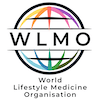
When evidence and logic coincide
When does evidence-based medicine (EBM) override logic-based medicine?
More often than it should, according to a punchy piece in a recent edition of the British Medical Journal. Scottish GP, Des Spence, decries the defiling of the EBM model as a ‘loaded gun at clinician’s heads.’
He claims the drug industry has benefited most from EBM, by ‘widening drug indications and legitimizing illegitimate diagnoses’ to the point where logic alone ‘no longer has a seat at the guidelines table; and he may be on to something.
Take exercise (or more correctly physical activity) for example. Since humans crawled out of the primordial sludge we’ve had to move for our daily bread. It’s really only over the last century that this has changed dramatically.
Hypothesised changes in activity levels over time with changes in technology suggests that logic dictates that feed-forward mechanisms from such an evolved process may have held in check a number of diseases that now predominate in modern, post-industrial societies. Yet, clinicians are often reluctant to prescribe physical activity when an easier alternative (i.e. drug), with a vested interest funded evidence-base (viz. blood pressure, weight control, blood lipid pills) might exist.
Does this come from a lack of confidence in compliance (which, co-incidentally is not all that brilliant with drugs anyway) – or a downgrading of the logic-base relative to some, often unfinalised, evidence-base? More specifically, could it be a misunderstanding of the requirements of the evidence-logic base?
This was addressed at a recent conference on exercise as treatment for chronic disease within the Faculty of Health Sciences and Medicine at Bond University on the Gold Coast. A range of speakers presented clear logic – supported by research – to show the value of specific exercise prescriptions in various chronic diseases, and in many cases superiority over pharmaceutical and other interventions.
Yet, most decried the lack of adoption at the clinical level.
Clear evidence was presented to show for example, that exercise and lifestyle advice have the same effects as metformin in reduction of HBA1C in Type 2 diabetes. Professor Maria Fiatorone Singh from Sydney University discussed why despite the paucity of data. She mentioned that resistance exercise shows even more promise than drugs and why, contrary to expectations, older and more frail patients often benefit the most.
Strong logic, although limited evidence, was also presented for the role of exercise in Chronic Obstructive Pulmonary Disease (COPD), reducing side effects and improving quality of life in post-cancer patients, fall prevention in the elderly, improvements in osteoarthritis and management of chronic (although not acute) back pain.
Even in late stages, such as post heart failure, well-designed exercise programs have been shown to increase survival by 13% according to Professor Tom Briffa, an expert in cardiac rehab from the University of WA. And while nothing seems to be very effective for chronic fatigue syndrome, well designed graded exercise programs developed by Professor Karen Wallman, also from UWA, have made her exercise protocol sought world-wide because of its effectiveness.
The key, it seems, is in selection of specific and graded exercise regimes targeted for the individual patient. In all cases where exercise is effective, it comes down to specific prescription provided by expert teams over a 6-12 week program. And while this can be complex and reasonably expensive, nobody has yet been able to claim a prescription-related, inexpensive short-term fix for chronic disease. So the comparison that is rarely made with drug-company funded research really needs to be made.
Exercise therapy has come a long way in recent times and clinicians can now involve Exercise Physiologists (EPs) in team care arrangements. Qualified specialists in different areas can be accessed through the Exercise and Sport Science Association of Australia (ESSA).
As pointed out by Dr Paul Glasziou, head of exercise science at Bond, despite the history of pharmacopeias, there is no non-drug pharmacopeia, although a Handbook of Non-Drug Interventions (HANDI) now on the RACGP web-site is a living document of interventions with evidence levels that could be more widely used in relation to exercise and other lifestyle interventions.
“If exercise was listed on the stock exchange, the advice from any financial advisor would be to buy, buy, buy,” says Tom Briffa. It’s where logic and evidence coincide. But where are the ‘exerceutical’ companies to fund the much-touted evidence-base for such a treatment?
References:
Spence D. Evidence based medicine is broken. BMJ 2014;348:g22 doi: 10.1136/bmj.g22 (Published 3 January 2014)
Vogels N., Egger G., Plasqi, G., Westerterp KR. Estimating changes in daily physical activity levels over time: Implications for health interventions from a novel approach. Int J Sports Med, 2004; 25: 607-610.



